Kalpana Chawla: Biography & Columbia disaster
Astronaut Kalpana Chawla was the first Indian-born woman in space.

- Astronaut career
- Columbia disaster

Chawla's legacy
Kalpana Chawla became the first Indian-born woman to go to space in 1997. Six years later, on February 1, 2003, Chawla died when the space shuttle Columbia broke up on re-entry into Earth's atmosphere, killing all seven astronauts on board.
Chawla's legacy has lived on, however. In particular, her talent and hard work have inspired young people in India and around Earth to consider careers in spaceflight.
Born in Karnal, India, on March 17, 1962, to parents Banarasi Lal Chawla and Sanjyothi Chawla, Kalpana Chawla was the youngest of four children.
Until she started school, Chawla hadn't been formally named. Her parents called her Montu, but Chawla picked her own name from a selection when she entered education. The name Kalpana means "idea" or "imagination." Her full name is pronounced CULL-pah-na CHAU-la , though she often went by the nickname K.C.
As a child, Chawla developed an interest in flying after first seeing a plane at around the age of three. She spent days with her father visiting her local flying club with her father and showed an interest in aviation while at school.
Related : Columbia Disaster: What happened and what NASA learned
During her earlier education in India, Chawla attended Tagore Baal Niketan Senior Secondary School, Karnal.
Chawla obtained a degree in aeronautical engineering from Punjab Engineering College. When selecting the course, professors tried to dissuade her, as there were limited opportunities for girls in India following this career path. However, Chawla was adamant that this was the subject for her.
After completing her engineering degree in India, Chawla immigrated to the United States in the 1980s and became a naturalized citizen to continue her studies. She obtained her masters degree from the University of Texas and earned a doctorate in aerospace engineering from the University of Colorado in 1988.
Chawla began working at NASA's Ames Research Center the same year, working on powered-lift computational fluid dynamics. In particular, her work focused on understanding how air flows around an aircraft during flight and incorporating computers into the work.
Becoming an astronaut
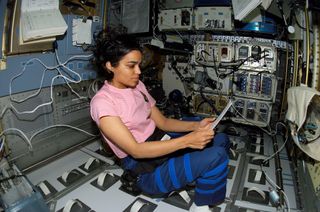
In 1994, Chawla was selected as an astronaut candidate. After a year of training, she became a crew representative for the Astronaut Office EVA/Robotics and Computer Branches, where she worked with Robotic Situational Awareness Displays and tested software for the space shuttles.
Chawla felt passionately about providing science education opportunities for young girls in India, and during her time as an astronaut, NASA invited Chawla's secondary school to take part in their Summer Space Experience Program. Each year from 1998, the school sent two girls to the Foundation for International Space Education's United Space School in Houston and Chawla would invite them into her home for an Indian dinner.
Chawla's first flight came in November 1997, aboard the space shuttle Columbia on flight STS-87 . The shuttle made 252 orbits of the Earth in just over two weeks. Chawla was a mission specialist and prime robotic arm operator for the flight; the other astronauts on board were Kevin Kregel, Steven Linsey, Winston Scott, Takao Doi and Leonid Kadenyuk.
The shuttle carried a number of experiments, including projects studying plant reproduction in microgravity and how materials behave in space.
In addition, Chawla used the robotic arm to deploy a satellite called SPARTAN 201, which was meant to study the outer layer of the sun , called the corona. However, the satellite malfunctioned and could not control its position upon deployment, according to NASA . Two other astronauts from the mission had to perform a spacewalk to recapture the satellite and the instrument never conducted any research.
After her first flight, Chawla said, "When you look at the stars and the galaxy, you feel that you are not just from any particular piece of land, but from the solar system."
The Columbia disaster
In 2000, Chawla was selected for her second voyage into space, to serve as a mission specialist on STS-107 . The mission was delayed several times before finally launching on Jan. 16, 2003.
During the 16-day flight, the crew completed more than 80 experiments, working a strenuous shift schedule to ensure that the research never stopped, according to NASA . Among other work, the STS-107 crew tested technology that NASA wanted to recycle water on the young International Space Station. Experiments developed by elementary school students from around the world analyzed how insects and fish respond to spaceflight; another suite of experiments studied the sun.
In particular, the flight carried a large pressurized chamber called the Spacehab research module inside the shuttle's payload bay. The experiments completed in the Spacehab module focused on biological and health sciences.
Between her two missions, Chawla logged 30 days, 14 hours, and 54 minutes in space.
On the morning of Feb. 1, 2003, the space shuttle returned to Earth, intending to land at Kennedy Space Center . But as the shuttle passed through Earth's atmosphere, hot gas streamed into the shuttle's wing where a briefcase-sized piece of insulation had broken off during launch and damaged the thermal protection system, the shield that protects it from heat during re-entry.

The unstable craft rolled and bucked, pitching the astronauts about. Less than a minute passed before the ship depressurized, killing the crew . Also on board were Rick Husband, Laurel Clark, Ilan Ramon, David Brown, William McCool and Michael Anderson.
The shuttle broke up over Texas and Louisiana before plunging into the ground. The accident was the second major disaster for the space shuttle program, following the 1986 explosion of the shuttle Challenger .
Related : Debris from space shuttle Columbia disaster found in Texas
NASA and independent groups both investigated the Columbia disaster in hopes of preventing another such tragedy. Examples include the Columbia Accident Investigation Board (2003) and NASA's Columbia Crew Survival Investigation Report (released in 2008).
Each year, NASA marks the loss of the Columbia crew, as well as the crews of the Challenger space shuttle and Apollo 1, on the last Thursday of January; the fatal missions are also regularly referenced when NASA personnel discuss the importance of prioritizing safety in human spaceflight.
No NASA mission has been fatal since the Columbia disaster.
Shortly after the Columbia disaster, scientists named seven asteroids after each crewmember as a "celestial memorial." To mark the first anniversary of the disaster, NASA also named seven hills on Mars for the lost crew.
The University of Texas dedicated a Kalpana Chawla memorial at the Arlington College of Engineering in 2010. At the time of its opening, the display included a flight suit, photographs, information about Chawla's life, and a flag that was flown over the Johnson Space Center during a memorial for the Columbia astronauts.
In October 2020, a commercial cargo spacecraft named after Chawla launched to the International Space Station (ISS). Northrop Grumman’s Cygnus capsule was named the S.S. Kalpana Chawla, as it is the company’s policy to dedicate their Cygnus capsules to someone who has played a pivotal role in human spaceflight.
"Chawla was selected in honor of her prominent place in history as the first woman of Indian descent to go to space," Northrop Grumman officials wrote in a statement .
Additional resources and reading
Chawla's widower, Jean-Pierre Harrison, wrote a biography called " The Edge of Time ," which he published in 2011. In addition, several documentaries have been produced about the Columbia crew, including " Astronaut Diaries: Remembering the Columbia Shuttle Crew " (2005), and one that focused on astronaut Ilan Ramon, called " Space Shuttle Columbia: Mission of Hope " (2013).
Bibliography:
- NASA, "Asteroids Dedicated to Space Station Columbia Crew," Aug. 6, 2003. https://www.jpl.nasa.gov/news/asteroids-dedicated-to-space-shuttle-columbia-crew
- NASA, "Biographical Data: Kalpana Chawla," Feb. 2003. https://history.nasa.gov/columbia/Troxell/Columbia%20Web%20Site/Biographies/Crew%20Profile%20Information/Crew%20Biographies/ASTRON~1.HTM
- NASA, "NASA Dedicates Mars Landmarks to Columbia Crew," Feb. 2, 2004. https://www.nasa.gov/home/hqnews/2004/feb/HQ_04048_columbia_landmarks.html
- NASA, "STS-87 Day 4 Highlights," accessed Feb. 10, 2022. https://science.ksc.nasa.gov/shuttle/missions/sts-87/sts-87-day-04-highlights.html
- NASA Life Sciences Data Archive, "STS-87," accessed Feb. 10, 2022. https://lsda.jsc.nasa.gov/Mission/miss/101
- NASA Life Sciences Data Archive, "STS-107," accessed Feb. 10, 2022. https://lsda.jsc.nasa.gov/Mission/miss/194
Join our Space Forums to keep talking space on the latest missions, night sky and more! And if you have a news tip, correction or comment, let us know at: [email protected].
Get the Space.com Newsletter
Breaking space news, the latest updates on rocket launches, skywatching events and more!

Nola Taylor Tillman is a contributing writer for Space.com. She loves all things space and astronomy-related, and enjoys the opportunity to learn more. She has a Bachelor’s degree in English and Astrophysics from Agnes Scott college and served as an intern at Sky & Telescope magazine. In her free time, she homeschools her four children. Follow her on Twitter at @NolaTRedd
China's Chang'e 6 mission to moon's far side enters lunar orbit (video)
SpaceX launching 23 satellites from Florida today on 1st leg of Starlink doubleheader
Axiom Space eyes the moon while continuing to dream big in Earth orbit
Most Popular
- 2 This diamond exoplanet lost its atmosphere — then it grew another
- 3 Solar eclipse 2024: Live updates
- 4 China just sent a secret mini-rover to the far side of the moon on its Chang'e 6 sample-return probe
- 5 Sun explodes in a flurry of powerful solar flares from hyperactive sunspots (video)

Kalpana Chawla, PhD, was an engineer, pilot, and astronaut who spent more than 30 days in space over two Space Shuttle missions.
Chawla was born in Karnal, India, and was fascinated by flight since her childhood. She earned a bachelor’s degree in aeronautical engineering from Panjab Engineering College, a master’s degree in aerospace engineering from the University of Texas-Arlington, and a PhD in aerospace engineering from the University of Colorado-Boulder. Chawla held numerous pilot licenses, including for airplanes, gliders, and seaplanes.
After completing her PhD in 1988, Chawla joined NASA’s Ames Research Center, where she specialized in the fluid dynamics of aircraft. She later continued aerodynamics research in the private sector. In 1991 Chawla became a United States citizen. NASA selected Chawla as an astronaut in late 1994 and she began astronaut training in 1995.
In addition to preparing for spaceflight, astronauts are also tasked with ground-based technical projects. Chawla worked on the development of the Robotic Situational Awareness Display, a tool to help astronauts operate robotic arms. She also tested space shuttle control software.
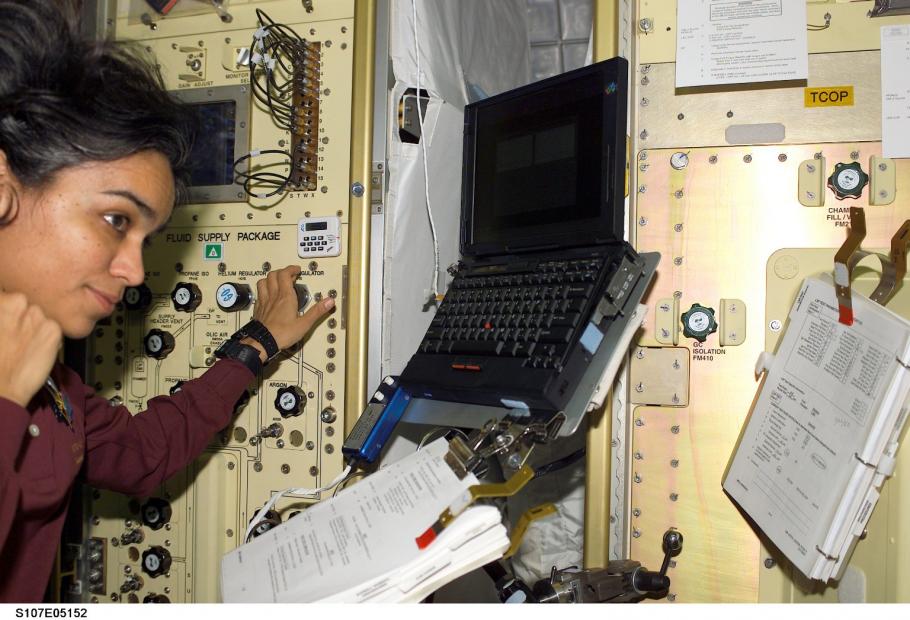
Mission specialist Kalpana Chawla on board Space Shuttle Columbia during STS-107. (Image courtesy of NASA)
Chawla flew on two Space Shuttle missions as a mission specialist. On November 19, 1997, she launched on board Space Shuttle Columbia as part of STS-87. Chawla specialized in operating the robotic arm, which she used to deploy the Spartan Satellite. During the 16-day mission, the crew conducted numerous experiments, with a focus on materials science. Chawla made history as the first Indian woman, and the first South Asian American woman, to fly in space. Indian Prime Minister Inder Kumal Gujral called Chawla in space to congratulate her on her journey and express pride in her representing India in space.
On January 16, 2003, Chawla launched on board Space Shuttle Columbia once more as part of STS-107. During this 16-day mission, the crew performed over 80 scientific experiments, with Chawla overseeing and conducting microgravity experiments on crystal growth, combustion and fire suppression, as well as prostate cancer. Chawla and the other six crewmembers–commander Rick D. Husband, pilot William C. McCool, mission specialists David M. Brown, Michael P. Anderson, and Laurel B. Clark, and payload specialist Ilan Ramon–were tragically killed when Space Shuttle Columbia broke apart during re-entry on February 1, 2003.
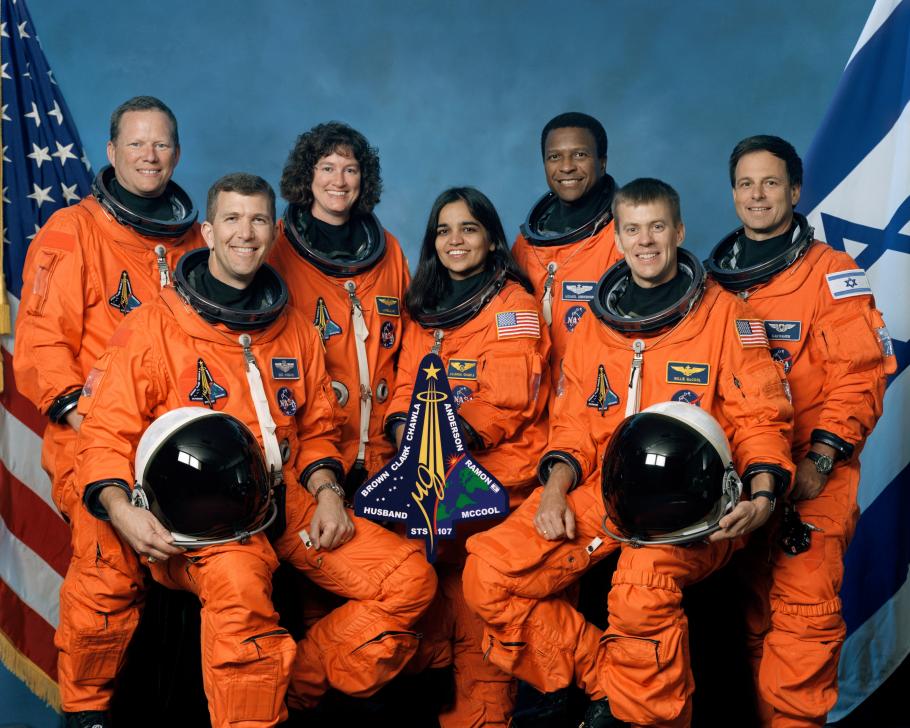
Chawla posthumously received the NASA Distinguished Service Medal and Congressional Space Medal of Honor in recognition of her career and sacrifice. A selection of her papers are housed in the Smithsonian’s National Air and Space Museum Archives.
We rely on the generous support of donors, sponsors, members, and other benefactors to share the history and impact of aviation and spaceflight, educate the public, and inspire future generations. With your help, we can continue to preserve and safeguard the world’s most comprehensive collection of artifacts representing the great achievements of flight and space exploration.
- Get Involved
- Host an Event
Thank you. You have successfully signed up for our newsletter.
Error message, sorry, there was a problem. please ensure your details are valid and try again..
- Free Timed-Entry Passes Required
- Terms of Use

Kalpana Chawla Short Biography
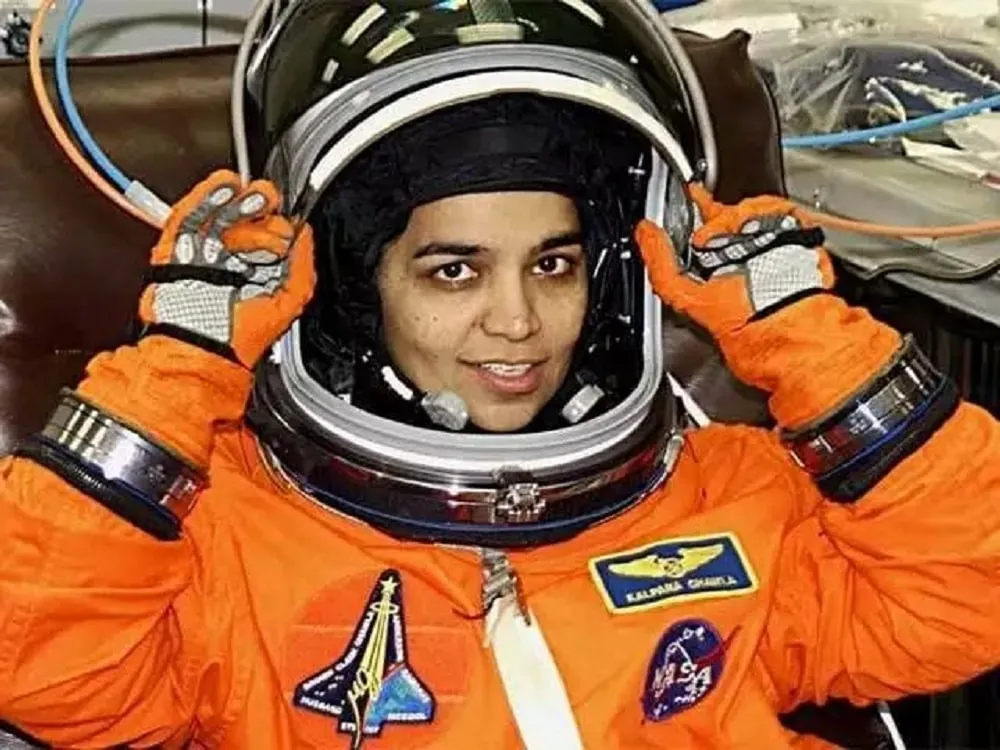
Table of Contents
Biography of Kalpana Chawla in Short
India’s Karnal is the place of birth of Kalpana Chawla (March 17, 1962 – February 1, 2003). She was the first Indian woman in space and the first Indian-American astronaut. As a mission specialist and primary robotic arm operator, she made her first space flight on the Space Shuttle Columbia in 1997. One of the seven crew members lost in the Space Shuttle Columbia disaster in 2003 was Kalpana Chawla.
Her second voyage occurred on STS-107, Columbia’s last Space Shuttle mission, in 2003. Chawla was one of the seven crew members who perished in the Columbia accident on February 1, 2003, when the spaceship exploded upon re-entering the atmosphere. Chawla received the Congressional Space Medal of Honor posthumously, and several streets, colleges, and other establishments bear her name.
At Tagore Baal Niketan Senior Sec School in Karnal, Kalpana Chawla completed her previous education. In 1982, she graduated from Punjab Engineering College in Chandigarh with a Bachelor of Engineering in Aeronautical Engineering. She immigrated to the country in 1982, and in 1984 she graduated from the University of Texas at Arlington with an M.S. in aeronautical engineering. Later, Kalpana Chawla graduated from the University of Colorado in Boulder with a second M.S. in 1986 and a Ph.D. in aeronautical engineering in 1988.
NASA CAREER
In March 1995, Kalpana Chawla enlisted in the NASA Astronaut Corps, and in 1996, she was chosen for her maiden trip. She said, “You are only your intelligence,” as she was moving through the weightlessness of space. She had logged 10.67 million kilometers or 252 full rotations of the planet.
On November 19, 1997, she launched into orbit as a member of the six-person crew of Space Shuttle Columbia during STS-87. In addition to becoming the second Indian to travel in space after cosmonaut Rakesh Sharma in 1984, Kalpana Chawla was also the first woman of Indian descent to do so. In 252 orbits of the Earth during her maiden mission, Chawla covered a distance of more than 10.4 million miles and spent more than 372 hours in space.
Kalpana Chawla Death
We lost Kalpana Chawla in the Space Shuttle Columbia tragedy on February 1, 2003, when the Space Shuttle disintegrated over Texas during re-entry into the Earth’s atmosphere, killing all seven crew members. This disaster occurred just before the Space Shuttle was supposed to complete its 28th mission, STS-107.
About Author
Piyush Kumar
We, with our blogs, promotes the traveling lifestyle and helps in guiding people about all the aspects of exploring a new place, shaktipeeth, jyortirlinga, foods, temples, etc.
See author's posts
More Stories

Short Biography of Albert Einstein

Short Biography About Isaac Newton

Short Biography of MS Dhoni
Leave a reply cancel reply.
Your email address will not be published. Required fields are marked *
Save my name, email, and website in this browser for the next time I comment.
You may have missed
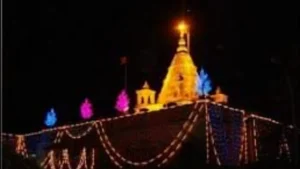
- Dharamshala(यात्री निवास)
Cycle Swamy Satram in Shirdi- शिरडी में स्थित साइकिल स्वामी सत्रम की जानकारी

Arya Vysya Satram in Vijayawada- विजयवाड़ा में स्थित आर्य वैश्य सत्रम की जानकारी
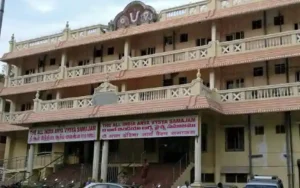
Arya Vysya Satram Kanchipuram- कांचीपुरम में स्थित आर्य वैश्य सत्रम की जानकारी

Satram in Tirumala-तिरुमाला में स्थित सत्रम की जानकारी

Karivena Satram in Srisailam- श्रीशैलम में स्थित कारिवेना सत्रम की जानकारी

Dr. Kalpana Chawla, PhD
Dr. Kalpana Chawla was the first Indian woman in space. Born in India, she immigrated to the United States after earning her degree in aeronautical engineering. In the 1980s, she became a naturalized citizen and obtained her master’s and doctoral degrees in aerospace engineering. In 1994, NASA selected her as an astronaut candidate. Her first flight was in 1997 on the space shuttle Columbia, where she was an operator of the remote manipulator arm. Her second flight was in 2003 on Columbia, but when the shuttle re-entered Earth’s orbit for landing, part of the shuttle’s insulation broke off. This damaged the thermal protection system, causing hot gas to enter the wing and depressurizing the shuttle. All seven crew members died in the tragic accident. The crew’s legacy has been honored through documentaries and investigations to prevent future accidents. In 2010, the University of Texas dedicated a memorial to Chawla at the Arlington College of Engineering.
Learn more at space.com
« View All Historical Women
- 1629 K Street, Suite 300, Washington, DC 20006
- (202) 827-9798
Registered 501(c)(3). EIN: 23-7221574
Quick Links
Join AWIS Donate Career Center The Nucleus Advertising
Let's Connect
PRIVACY POLICY – TERMS OF USE
© 2024 Association for Women in Science. All Rights Reserved.
[et_pb_section admin_label=”section”][et_pb_row admin_label=”row”][et_pb_column type=”4_4″][et_pb_contact_form admin_label=”Contact Form” captcha=”off” email=”[email protected]” title=”Download Partner Offerings” use_redirect=”on” redirect_url=”https://awis.org/corporate-packages/” input_border_radius=”0″ use_border_color=”off” border_color=”#ffffff” border_style=”solid” custom_button=”off” button_letter_spacing=”0″ button_use_icon=”default” button_icon_placement=”right” button_on_hover=”on” button_letter_spacing_hover=”0″ success_message=” “]
[et_pb_contact_field field_title=”Name” field_type=”input” field_id=”Name” required_mark=”on” fullwidth_field=”off”]
[/et_pb_contact_field][et_pb_contact_field field_title=”Email Address” field_type=”email” field_id=”Email” required_mark=”on” fullwidth_field=”off”]
[/et_pb_contact_field]
[/et_pb_contact_form][/et_pb_column][/et_pb_row][/et_pb_section]
[box type=”download”] Content goes here[/box]
Complimentary membership for all qualified undergraduates/graduates of the institution. Each will receive:
• On-line access to the award-winning AWIS Magazine (published quarterly)
• Receipt of the Washington Wire newsletter which provides career advice and funding opportunities
• Ability to participate in AWIS webinars (both live and on-demand) focused on career and leadership development
• Network of AWIS members and the ability to make valuable connections at both the local and national levels
Up to 7 complimentary memberships for administrators, faculty, and staff. Each will receive:
• A copy of the award-winning AWIS Magazine (published quarterly)
• 24 Issues of the Washington Wire newsletter which provides career advice and funding opportunities
• Access to AWIS webinars (both live and on-demand) focused on career and leadership development

View my profile
Priority notifications
Get-Inspired
Who was kalpana chawala: early life, education, nasa career, death and legacy.
Who is Kalpana Chawla?
Kalpana Chawla was an Indian-American astronaut and engineer. She is also the first woman of Indian origin to go to space. She first flew to space in 1997 on Space Shuttle Columbia, where played the role of mission specialist and primary robotic arm operator. Her second and final flight on Space Shuttle Columbia was in 2003 where she perished with seven other fellow crew members as the shuttle was re-entering Earth. Besides her aeronautical career, she was also interested in flying aerobatics, tail-wheel aeroplanes and held a license as a Certified Flight Instructor as well as Commercial Pilot’s licences for land and seaplanes.
Early Life
Born in the Indian city of Karnal in 1962, Chawla was the youngest of four siblings. Being confident and outgoing as she was known to be, she is said to have chosen her own name. At the time of her admission to a nearby school, she had not been given a formal name and was called by her nickname, Monto at home. As the principal asked Chawla to pick a name amongst the three names her family had in mind—Kalpana, Jyotsna and Sunaina. She happened to confidently pick ‘Kalpana’.
Her interest in aeroplanes and flying had taken roots since her early childhood. Karnal, being one of the few Indian towns at the time to have a flying club, would often see planes flying over, which Chawla had come to notice and enjoy watching. She was taken on a ride on the Pushpak and a glider by her father, an experience she fondly remembered.
Education
Kalpna Chawla attended the Tagore Baal Niketan Sr. Sec. School in Karnal for her early education and went on to complete her Bachelor of Engineering degree in Aeronautical Engineering at Punjab Engineering College at Chandigarh in 1982. She subsequently moved to the United States in 1984 to study at the University of Texas at Arlington. She went on to pursue an M.S. degree in aerospace engineering here. She also completed a second M.S. degree in 1986 as well as a PhD in aerospace engineering from the University of Colorado at Boulder in 1988.
NASA Career
In 1988, Chawla started her work as vice president of Overset Methods, Inc. at the NASA Ames Research Centre. As a part of her role, she researched the simulation of complex air flows encountered around aircrafts. In 1993 Kalpana Chawla joined Overset Methods Inc., Los Altos, California, as Vice President and Research Scientist where she was responsible for forming a team of researchers for the development and implementation of efficient aerodynamic optimisation techniques.
In December 1994, Kalpna Chawla was selected by NASA as an astronaut candidate in the 15th Group of Astronauts and reported to the Johnson Space Centre from March 1995 onwards. As a result of completing a year of training and evaluation, she was assigned as crew representative for the Astronaut Office EVA/Robotics and Computer Branches to work on technical issues. Her role included assignments on the development of Robotic Situational Awareness Displays and testing space shuttle control software in the Shuttle Avionics Integration Laboratory. Following this role, she was assigned as a mission specialist and prime robotic arm operator in November 1996 on Space Shuttle mission STS-87. Chawla had her first opportunity to fly in space in November 1997 as a part of this mission. The shuttle made 252 orbits of the Earth in a little over two weeks and carried out various experiments and observing tools on its trip. Chawla deployed a Spartan satellite from the shuttle which studied the outer layer of the sun but ended up malfunctioning.
In 2000, she was selected for her second mission as a part of the crew of STS-107. The mission was repeatedly delayed and ended up finally launching on January 16, 2003. For the 16-day flight to space, Chawla’s role included the microgravity experiments, for which almost 80 experiments were conducted by the crew, studying earth and space science, advanced technology development, and astronaut health and safety.
As the crew of STS-107 was re-entering Earth on completing its 16-day flight duration on February 1, 2003, Space Shuttle Columbia and the crew, including Kalpna Chawla, perished about 16 minutes before its scheduled landing. Investigations following the incident found that a hole on one of the wings of the space shuttle led to hot atmospheric gases penetrating its heat shield, subsequently causing internal damages and the shuttle blowing up.
A 13-minute video recording of the astronauts, made during the start of the re-entry showed the crew conducting routine procedures and sharing jokes, indicating they had no idea of what was to come.
Even after her death, Kalpna Chawla remains a massive form of inspiration to many Indian women for her achievements as well as for her successful career as an astronaut. Her legacy lives on in many ways. In her honour, the Haryana government in India set up a medical college and hospital in Karnal, along with names a planetarium in Jyotisar after her. The government of Karnataka as well instituted the Kalpna Chawla award in 2003 to recognise women scientists. At the University of Texas at El Paso (UTEL) in the United States, the Indian Students Association (ISA) launched the Kalpana Chawla Memorial Scholarship program. The University of Chicago has also renamed its Alumni Award to The Kalpana Chawla Outstanding Recent Alumni Award. India's first weather satellite, the Kalpana 1, was also named after the astronaut.
The University of Texas dedicated a memorial to Chawla at the Arlington College of Engineering in 2010. The memorial display included a flight suit, photographs, information about her life.
What you can learn from Kalpana Chawla
1. Giving Back
Even after moving to a different country to establish a successful aeronautical career, Chawla remained close to her roots and believed in helping others. When she became an astronaut, NASA invited her school in India to take part in their Summer Space Experience Program. Chawla felt strongly about providing science education opportunities for young girls in India. Each year, from 1998, the school sent two girls to the Foundation for International Space Education’s United Space School in Houston, USA.
2. Persistence
Kalpna Chawla often spoke of her family’s hesitance in letting her pursue a career in the aeronautical and engineering space. However, as persistent she was, Chawla stuck through her passion and tried her best to fulfil her dreams, something we all can take cues from.
3. Confidence
In Chawla’s time, it was not often that one saw many women in the field of aeronautics, let alone women who were willing to move countries to pursue their careers in space. This, however, failed to deter Chawla from her path and she confidently led the way to a whole new generation of inspired women.
Being the first woman of Indian origin to travel to space, Kalpna Chawla opened doors to many young women in India to pursue a career in the space of aeronautics as well as science as a whole. Even today, she remains an icon for women from all walks of life thanks to her achievements and hard work.
FAQs
Kalpana Chawla was an astronaut and also the first woman of Indian origin to go to space. Her first trip to space was in 1997 on Space Shuttle Columbia as a mission specialist and primary robotic arm operator.
What did Kalpana Chawla study?
Kalpana Chawla completed her early education from the Tagore Baal Niketan Sr. Sec. School in Karnal, and Bachelor of Engineering degree in Aeronautical Engineering from Punjab Engineering College at Chandigarh in 1982. Her educational journey in the United States include an M.S. degree in aerospace engineering from the University of Texas at Arlington, as well as PhD in aerospace engineering from the University of Colorado at Boulder.
Describe Kalpana Chawla's first mission in space
Kalpana Chawla was assigned as a mission specialist and prime robotic arm operator on Space Shuttle mission STS-87 by NASA in 1996, which led to her first opportunity to fly in space in Movember 1997. Her role in the mission involved deploying the Spartan Satellite into space. As a part of the mission, she logged more than 15 days and 16 hours in space.
What was the Space Shuttle Columbia mission?
The Space Shuttle Columbia was Chawla’s second mission to space with NASA, where she was a part of the crew of STS-107. As a part of the mission, which was a 16-day flight to space, Chawla was responsible for the microgravity experiments to study earth and space science as well as astronaut health and safety.
How did Kalpna Chawla die?
At the end of the Space Shuttle Columbia mission, the crew of STS-107, along with Kalpna Chawla, perished following an explosion during their re-entry to Earth. This took place about 16 minutes before its scheduled landing on earth and was a result of a hole on one of the wings of the space shuttle led to hot atmospheric gases penetrating its heat shield and causing the shuttle to blow up. Chawla died on February 1, 2003.
Image Source: Kalpanachawlacholars.org
- Bihar Board
SRM University
Tn sslc result 2024.
- TN Board Result 2024
- GSEB Board Result 2024
- Karnataka Board Result 2024
- CG Board Result 2024
- Kerala Board Result 2024
- Shiv Khera Special
- Education News
- Web Stories
- Current Affairs
- नए भारत का नया उत्तर प्रदेश
- School & Boards
- College Admission
- Govt Jobs Alert & Prep
- GK & Aptitude
- general knowledge
Kalpana Chawla Biography: Death Anniversary, Family, Age, Education, Space Missions, Awards, Legacy, and More
Kalpana chawla biography: kalpana chawla was the first indian- born woman to go into space in 1997. she lost her life on 1 february 2003, when the space shuttle columbia was destroyed. let us take a look at kalpana chawla's early life, family, education, career, space missions, honours and recognition, legacy, etc..
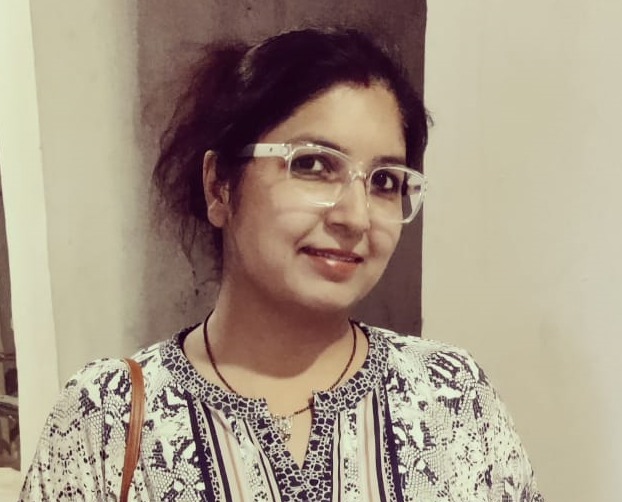
Kalpana Chawla Biography: How can we forget the first Indian-born woman to go into space. She is none other than Kalpana Chawla. Today is her death anniversary. On this day in 2003, she lost her life when the space shuttle Columbia was destroyed. While re-entering into Earth's atmosphere, the spacecraft broke out and killed all seven astronauts on board.
Kalpana Chawla Biography
Kalpana chawla biography: family, husband, child, age, early life and hobbies.
She was born on 17 March 1962 in Karnal, India. Her father was Banarasi Lal Chawla and her mother was Sanjyothi Chawla. She was the youngest of four children. She was called by her parents Montu until she started school. When she entered education, Chawla picked her own name. The name 'Kalpana' means "idea" or "imagination". She often went by the nickname K.C. She enjoyed flying, hiking, back-packing, and reading.
Kalpana Chawla Biography: Education
Kalpana chawla biography: career, becoming an astronaut.
She started work in 1988 at NASA Ames Research Center in the area of powered-lift computational fluid dynamics. She concentrated her research on simulation of complex air flows encountered around aircraft including the Harrier in "ground-effect."
Kalpana Chawla joined Overset Methods Inc., Los Altos, California, as Vice President and Research Scientist to form a team with other researchers specializing in the simulation of moving multiple body problems in 1993. Her work was to develop and implement efficient techniques to perform aerodynamic optimisation. Her project works results are documented in technical conference papers and journals.
In December 1994, she was selected by NASA. She reported to the Johnson Space Center in March 1995 as an astronaut candidate in the 15th Group of Astronauts.
Kalpana Chawla Biography: Space Missions
Kalpana Chawla's first opportunity to fly in space came in November 1997, aboard the space shuttle Columbia on flight STS-87. In just over two weeks, the shuttle made 252 orbits of the Earth. On the trip, the shuttle carried out several experiments and observing tools including a Spartan Satellite, which Chawla deployed from the shuttle.
The satellite that studied the outer layer of the sun malfunctioned because of some software errors and the other two astronauts had to perform a spacewalk to recapture it from the shuttle.
Second Space Mission: Disaster strikes
Kalpana Chawla was selected for her second voyage into space in 2000. She served again as a mission specialist for STS-107. Various times, the mission was delayed, and finally, in 2003, it was launched. Over a 16-days flight, the crew completed more than 80 experiments. On 1 February 2003 morning, the space shuttle returned to Earth and was intended to launch at Kennedy Space Center. During the launch time, as per the official, a briefcase-sized piece of insulation and broken off. It damaged the thermal protection system of the shuttle's wing. It was the shield that protected it from heat during re-entry. As the shuttle passed through the atmosphere, hot gas streaming into the wing caused it to break up.
The craft became unstable, rolled, and bucked, pitching the astronauts about. The ship depressurised in less than a minute and crew members were killed. The shuttle broke up over Texas and Louisiana before plunging into the ground. It was the second major disaster following the 1986 explosion of the shuttle Challenger.
In a crew, all seven were killed. The crew included Rick Husband, Laurel Clark, Ilan Ramon, David Brown, William McCool, Michael Anderson, and Kalpana Chawla.
Kalpana Chawla Biography: Awards
Kalpana chawla biography: legacy.
The Columbia event was officially investigated and reported to help understand what happened. Also, how to prevent the tragedy from re-occurring in future spaceflights. For example in 2003, the Columbia Accident Investigation Board. In 2008, NASA"s Columbia Crew Survival Investigation Report was released.
Various documentaries have been produced about the crew of Columbia including "Astronaut Diaries: Remembering the Columbia Shuttle Crew" (2005), "Space Shuttle Columbia: Mission of Hope" (2013).
In 2010, the University of Texas dedicated a Kalpana Chawla memorial at the Arlington College of Engineering.
A commercial cargo spacecraft named after Kalpana Chawla was launched to the international space station in October 2020.
Northrop Grumman’s Cygnus capsule was named the S.S. Kalpana Chawla.
Get here current GK and GK quiz questions in English and Hindi for India , World, Sports and Competitive exam preparation. Download the Jagran Josh Current Affairs App .
- Who is Kalpana Chawla? + Kalpana Chawla was the first Indian- born woman to go into space in 1997. She lost her life on 1 February 2003, when the space shuttle Columbia was destroyed.
- How did Kalpana died in space? + On 1 February 2003, Kalpana Chawla lost her life when the space shuttle Columbia was destroyed. While re-entering into Earth's atmosphere, the spacecraft broke out and killed all seven astronauts on board.
- When was Kalpana Chawla born? + Kalpana Chawla was born on 17 March 1962 in Karnal, India.
- IPL Schedule 2024
- Fastest 50 in IPL 2024
- wbresults.nic.in Result 2024
- India T20 World Cup Squad 2024
- Mother's Day 2024
- IPL 2024 Points Table
- Hanuman Jayanti 2024
- Ram Navami 2024
- Purple Cap in IPL 2024
- WB HS Result 2024
Latest Education News
SSC GD Constable Result 2024 Live Update: जल्द जारी होने वाला है एसएससी कांस्टेबल रिजल्ट ssc.gov.in पर, यहाँ देखें एक्सपेक्टेड कटऑफ मार्क्स
Kerala SSLC Result 2024 [ഫലം] Out LIVE: Check KBPE Class 10 Results Link at Official Website: results.kite.kerala.gov.in by Roll Number, School-wise
SSLC Result 2024 Karnataka LIVE (ಫಲಿತಾಂಶ) OUT: KSEEB 10th Results Online at kseab.karnataka.gov.in, karresults.nic.in by Login and Registration Number
SSC GD Result 2024 Live: Constable Results Direct Link on ssc.gov.in; Check Expected Cut Off, Merit List Date
UGC NET Previous Year Question Paper PDF for Paper 1 & 2, Download Subject-wise PYQs
WBPSC Clerkship Salary 2024: Check In-Hand Pay, Structure, Perks and Allowances
BSEB STET Exam Date 2024: इसी माह हो सकती है बिहार एसटीईटी की परीक्षा, जल्द घोषित होगी तारीखें
[यहां देखें] Purple Cap in IPL 2024: किसके नाम सबसे ज्यादा विकेट, कौन निकलेगा सबसे आगे?
Microsoft Gears Up for Mobile Domination: Xbox Game Store Arrives on iOS and Android
Lok Sabha Elections 2024: प्रधानमंत्री पद पर रहते हुए लोकसभा चुनाव में किस नेता को मिली है हार? पढ़ें
GT IPL 2024 Match Schedule: गुजरात टाइटंस के सभी मैचों का वेन्यू, डेट और टाइम यहां देखें
IPL 2024 CSK Players: चेन्नई सुपर किंग्स के खिलाड़ियों की पूरी लिस्ट यहां देखें
ICC T20 World Cup 2024: T20 वर्ल्ड कप का शेड्यूल जारी, कब और किससे है भारत का मैच देखें यहां
India T20 World Cup 2024 Squad: ये है रोहित की ‘विराट’ टीम, किस रोल में कौन? देखें यहां
Most Sixes In IPL 2024: आईपीएल में चौकों-छक्कों की रेस में कौन सबसे आगे? देखें पूरी लिस्ट
[चेक] Most Runs In IPL 2024: दिलचस्प हो गयी है Orange Cap की रेस, Virat टॉप पर
Fastest 50s In IPL History: किसने जड़ा है आईपीएल इतिहास का सबसे तेज़ अर्द्धशतक? देखें पूरी लिस्ट
[Direct LINK] karresults.nic.in, sslc.karnataka.gov.in 2024 SSLC Results Out: Official Website to Check Karnataka 10th Result Online
IPL 2024: हिंदी हो या भोजपुरी इन चर्चित कमेंटेटरों के साथ आईपीएल का लें लुफ्त
IPL 2024 Playoffs Teams: ये है प्लेऑफ़ की चार प्रबल दावेदार, इन टीमें के भी बन सकते है चांस

Embarking on a transformative journey through six chapters, we traverse India's landscape, exploring pioneering startups and their revolutionary...
- Sustainability
- Agriculture
- Brand Campaigns
- Watch inspiring videos
- Advertise With Us
- Press Coverage
Follow Us On
Download App
A Starry-Eyed Girl Called ‘Monto’: The Untold Story of Kalpana Chawla’s Childhood in India
A role model for countless Indian women, Kalpana was an ordinary girl from Karnal whose lofty dreams and indomitable courage took her to space. Here’s the little known story of her childhood in India.

O n February 1, 2003, seven NASA astronauts perished over Texas as Space Shuttle Columbia STS-107 disintegrated while re-entering the Earth’s atmosphere. One of those killed in the disaster was Kalpana Chawla, the first Indian-origin woman in space.
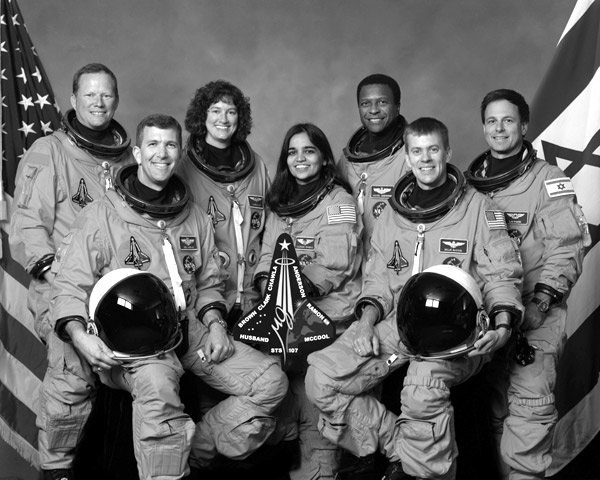
Originally from Multan district of West Punjab (now Pakistan), Kalpana’s parents came to Karnal in Haryana during partition. Her father Banarasi Lal Chawla took up several petty jobs (working as a street hawker, a cloth seller and even a metal fabricator) to provide for his family. He eventually set up a tyre manufacturing business while his wife Sanyogita managed the household.
Born on March 17, 1962, Kalpana grew up in an environment where hard work was encouraged. The youngest of four siblings, Kalpana was a precocious child. Her natural curiosity, independent nature and delight in discovering how things worked were encouraged by her mother, a supportive and liberal woman who ensured that all her daughters went to school at a time when education was considered an unnecessary luxury for girls.
A confident, outgoing girl, Kalpana even selected her own name. It so happened that Kalpana had not been formally named at a proper ceremony and was called by her nickname “Monto” at home. During her admission in a nearby school, Tagore Bal Niketan, the principal asked the student’s name.
Kalpana’s aunt replied that they had three names in mind – Kalpana, Jyotsna and Sunaina – but they hadn’t decided yet. So the principal asked the little girl which name she liked best. And she replied firmly, “Kalpana. Because it means imagination.”
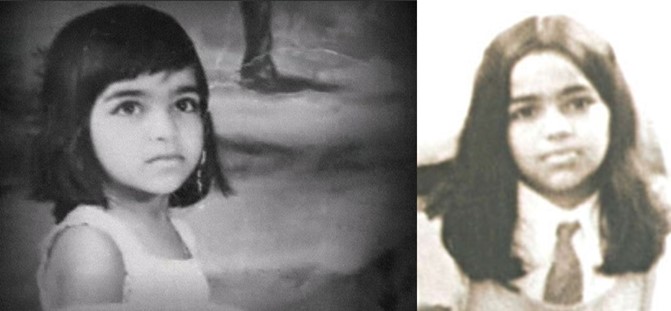
Photo Source
Just like the name she chose, Kalpana was a highly creative and imaginative child. On sultry summer days, while her family slept on the roof of their small house, the little girl would stay awake for hours to watch the twinkling stars in the night sky. Such was her fascination with stars that once when her classmates built a geographical map of India on the floor of their classroom, she covered the ceiling completely with stars – little sparkling dots on black chartpapers!
Another thing that caught young Kalpana’s fancy were aeroplanes. Back then, Karnal was one of the few Indian towns with a flying club called Karnal Aviation Club. As her house was just a few kilometres away from the club, she would often clamber up to the roof and watch them go roaring over her head, waving her hand at the pilot if the plane flew low over the house.
In an interview she gave before the Columbia mission, Kalpana recalled how she and her brother would be on their bicycles, trying to see where the aeroplanes were headed. She said: “We’d ask my dad if we could get a ride in one of those planes. And he did get us a ride on the Pushpak and a glider. I think that’s really my closest link to aerospace engineering. Also, growing up, we knew of J.R.D. Tata, who flew some of the first mail flights in India, one of which now hangs in an aerodrome out there. Seeing this aeroplane and just knowing what this person has done during those years definitely captivated my imagination.”
In school, while her friends drew mountains, forests and rivers on being asked to draw scenery, Kalpana would draw colourful aeroplanes flying amidst clouds. She also loved making aeroplane models in her craft classes. One of Kalpana’s school teachers remembers the question the inquisitive and sensitive girl had once asked her: “How can people be divided into classes, sects and religions, when they all look alike from the sky?”
Hard-working and focused, Kalpana was a good student who enjoyed subjects like English, Hindi and Geography. However, her favourite subject was science. Other than dancing, she also enjoyed cycling, running and playing badminton. A complete tomboy, she kept her hair short, never put on any make-up and rarely paid attention to fashion. During her elder sister’s marriage, she insisted on wearing the same dress for three days, saying that it was wasteful and unnecessary to do otherwise!
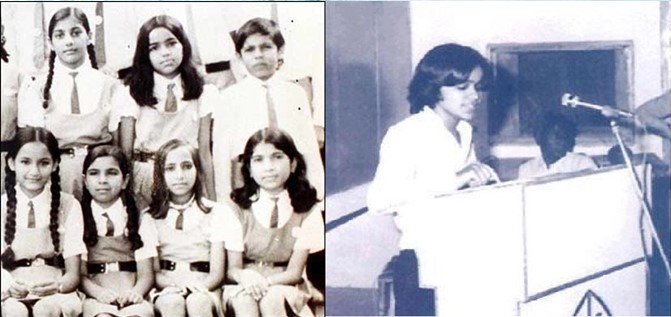
After her class 10 board examinations, she got admission in DAV college for her higher studies. It was here that an interesting (almost prescient) incident took place.
During a mathematics class, Kalpana’s teacher was explaining the concept of null set (empty set in algebra). To give an example, she said that a set of Indian women astronauts was a classic example of null set as till date no Indian woman had become an astronaut. To everybody’s surprise, Kalpana quipped, “Who knows, Ma’am, one day this set may not be empty!” At that time, no one in the classroom could imagine, let alone know, that the girl who had spoken these lines would herself go on to fill the set!
After completing her class 12 board exams with flying colours, Kalpana decided to pursue her dream of an engineering career. Her father was not in favour of Kalpana doing engineering as he believed that it was not a suitable career option for girls. He advised her to become a doctor or a school teacher but Kalpana was determined to become a flight engineer and for that, an engineering degree was essential.
Kalpana had her mother’s unconditional support and her father finally gave in when he realised that her mind was made up. So Kalpana left for Chandigarh where she took admission in Punjab Engineering College. During counseling for the selection of various engineering courses, she chose aeronautical engineering, the only girl to do so.
The surprised counselors tried their best to dissuade her from joining aeronautical engineering as it had limited job opportunities in the country but Kalpana refused to budge. When they asked her what was her second option, she replied that she had none.
She was determined to become a flight engineer, and nothing on earth could convince her to choose another stream.
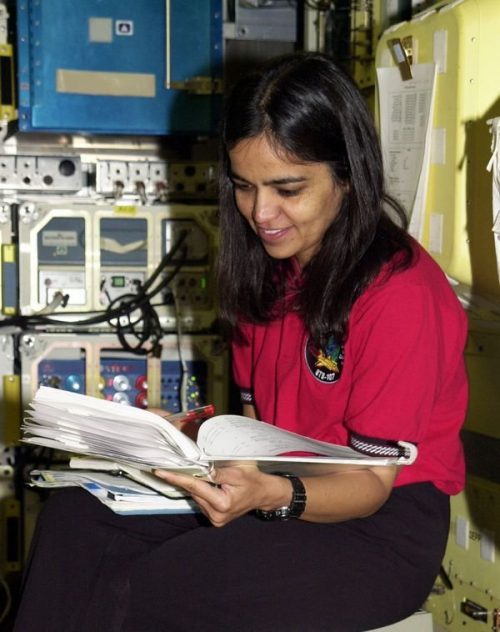
In college, Kalpana put her heart and soul into her studies. As there was no girl’s hostel, she lived alone in a tiny room over a garage, cycling to college everyday. In her free time, she devoted herself to learning karate (she became a black belt) and reading books by her favourite authors (Alexander Solzhenitsyn, Ayn Rand, Oriana Fallaci and Richard Bach).
She enjoyed listening to classic rock, especially of the 1970s British band Deep Purple, and sufi music (Columbia’s debris included CDs of Abida Parveen, Nusrat Fateh Ali Khan, Ravi Shankar and Hariprasad Chaurasia). Kalpana also loved collecting magazines and books on aviation and would read them from cover to cover. She became a student editor at her college magazine and the joint secretary of the college’s Aero Club and Astro Society.
Always enthusiastic about working on new projects, she surprised her professors and seniors by presenting a paper on ‘Time-Lapse in Space’ (a topic that dealt with Albert Einstein’s theories of relativity) at the college’s annual conference in her first year itself!
In 1982, Kalpana secured the third rank in her batch to become the first woman aeronautical engineer to pass out from her college. This was, however, just a stepping stone to much greater heights that she would achieve in the years ahead.
A good academic record and active involvement in the PEC’s Aero and Astro Society assured Kalpana easy admission into the Master’s course in Aerospace Engineering at the University of Texas in USA. She had a tough time persuading her family to allow her to go abroad for higher studies and as a result, she joined the session several months late.
It was during this time that Kalpana met and fell in love with Jean Pierre Harrison, a flying instructor and an aviation author. She married him in 1983 and it was from him that she learned how to fly a plane – Kalpana was licensed to fly single and multi-engine land aeroplanes, single-engine seaplanes and was also a certified flight instructor.

In 1988, Kalpana completed her doctorate in aerospace engineering from the University of Colorado at Boulder. The same year she began working at NASA’s Ames Research Center, working on power-lift computational fluid dynamics in the same year.
Despite her busy schedule, she kept in touch with her school and college in India. Thanks to her efforts, every year two students from Tagore Bal Niketan were given the opportunity to visit NASA. The students would stay with their ‘Kalpana didi’ who would make Indian meals especially for them.
In December 1994, Kalpana Chawla reported to the Johnson Space Center in March 1995 as an astronaut candidate in the 15th Group of Astronauts. The rest, as they say, is history. In November 1996, she was assigned as mission specialist and prime robotic arm operator on space shuttle STS-87 (November 19 to December 5, 1997).
As part of her first mission, Kalpana traveled 6.5 million miles in 252 orbits of the Earth and logged 376 hours and 34 minutes in space, becoming the first Indian-origin woman to got to space. Less than five years later, she was cleared by NASA to fly aboard Columbia for a second time.
In her last email to the students of Punjab Engineering College, Kalpana wrote: “The path from dreams to success does exist. May you have the vision to find it, the courage to get onto it, and the perseverance to follow it.”
Also Read : This Couple’s Stunning Documentaries Are Taking Space Dreams to Rural Kids in India
Like this story? Or have something to share? Write to us: [email protected] , or connect with us on Facebook and Twitter . NEW: Click here to get positive news on WhatsApp!
If you found our stories insightful, informative, or even just enjoyable, we invite you to consider making a voluntary payment to support the work we do at The Better India. Your contribution helps us continue producing quality content that educates, inspires, and drives positive change.
Choose one of the payment options below for your contribution-
By paying for the stories you value, you directly contribute to sustaining our efforts focused on making a difference in the world. Together, let’s ensure that impactful stories continue to be told and shared, enriching lives and communities alike.
Thank you for your support. Here are some frequently asked questions you might find helpful to know why you are contributing?

Sounds Interesting? Share it now!
This story made me
Tell Us More

Kalpana Chawla Essay
500+ words essay on kalpana chawla.
Kalpana Chawla was the first woman of Indian origin to go to space. She is an inspiration to millions of women who want to build their careers in aerospace. Kalpana Chawla said that she never dreamed, as a child, that she would cross the frontiers of space. It was enough that her parents allowed her to attend engineering college after her graduation. She was a lady who was passionate about her dream and worked hard towards it to make those dreams come true. With the help of this essay on Kalpana Chawla, students will get to know about her life story. They can also check out the list of CBSE Essays to practise more essays on different topics and boost their writing skills.
Life Story of Kalpana Chawla
Kalpana Chawla was born on 17th March 1962 in a small place, Karnal, in Haryana, India. She was a naturalised U.S. citizen and married to flight instructor Jean-Pierre Harrison. She loved flying, hiking, backpacking, and reading books. She held a Certificated Flight Instructor’s licence with aeroplane and glider ratings, Commercial Pilot’s licence for single and multi-engine land, seaplanes, gliders and instrument ratings for aeroplanes. She enjoyed flying aerobatics and tail-wheel aeroplanes.
Educational Background
Kalpana Chawla completed her graduation in 1976 from Tagore School in Karnal, India. She received a Bachelor of Science degree in aeronautical engineering from Punjab Engineering College in India in 1982. She then moved to the United States to pursue her graduate education. In 1984 she received a Master’s degree in aerospace engineering from the University of Texas, and a PhD in aerospace engineering from the University of Colorado in 1988.

Kalpana Chawla’s First Space Mission
Kalpana’s first space mission in the space shuttle, Columbia, was 15 days, 16 hours and 34 minutes long. During this time, she went around the Earth 252 times, travelling 10.45 million kilometres! The crew included a Japanese and a Ukrainian astronaut. The crew performed experiments such as pollinating plants to observe food growth in space and tests for making stronger metals and faster computer chips, all for a price tag of about 56 million dollars.
When the news about the Columbia disaster broke, there was shock and disbelief. While returning to Earth, the space shuttle disintegrates 16 minutes prior to its scheduled landing. Thus the life of all the crew members, including Kalpana Chawla, ended. The town of Karnal spent a sleepless night as thousands of households stayed glued to their television sets in the hope that Kalpana and the crew had somehow survived. But, they all died in the accident.
Kalpana Chawla, a girl from a small town who touched the skies, had become an inspiration for millions of young Indians. In a message that Kalpana Chawla sent from aboard the space shuttle, Columbia, to students of her college in Chandigarh, said, “ The path from dreams to success does exist. May you have the vision to find it, the courage to get onto it. Wishing you a great journey. ” There will surely be many who start off on this journey to fulfil their dreams.
Students must have found this essay on “Kalpana Chawla” useful for improving their essay-writing skills. They can get the study material and the latest updates on CBSE/ICSE/State Board/Competitive Exams, at BYJU’S.
Frequently Asked Questions on Kalpana Chawla Essay
What is kalpana chawla known for.
Kalpana Chawla became the first Indian-born woman to go into space in the year 1997.
Where was Kalpana Chawla born?
Kalpana Chawla was born in Karnal (Haryana state).
What was the famous message given by Kalpana Chawla?
In a message sent from the space shuttle Kalpana Chawla had mentioned that ‘The path from dreams to success does exist’.
Leave a Comment Cancel reply
Your Mobile number and Email id will not be published. Required fields are marked *
Request OTP on Voice Call
Post My Comment
- Share Share
Register with BYJU'S & Download Free PDFs
Register with byju's & watch live videos.

Counselling
Kalpana Chawla (Astronaut) Age, Biography, Husband, Facts & More
Some lesser known facts about kalpana chawla.
- Kalpana’s parents hail from the Multan district of West Punjab (now Pakistan). When her father, Banarsi Lal, Chawla was leaving his hometown of Sheikhopura, communal riots broke out. He was one of the few survivors who managed to reach India safely but without any possessions.
- In order to make a living, her father became a street hawker and started selling commodities like candies, dates, soaps, groundnuts, etc. However, luck soon bestowed upon him and he opened his own textile shop in the locality. A few years later, he became a self-taught engineer and began manufacturing tyres when the Indian market was flooded with the imported ones. Meanwhile, he married Sanyogitha, whose family also came from the same region in Pakistan.
- Strangely, Kalpana’s parents did not give her any formal name and referred to her only by her nickname, ‘Monto’. However, one day when her aunt took Kalpana for admission to a nearby nursery school, the principal asked her name. ‘We have three names in mind — Kalpana, Jyotsna and Sunaina, but we haven’t decided,’ replied her aunt. The principal then asked the young girl if she would like to choose any of these names, to which the girl replied ‘Kalpana’. Hence, Kalpana chose her own name!
- From a young age, Kalpana was fascinated by stars and planets. Once when she and her classmates built a physical geography map of India covering the floor of an entire classroom in her school, she covered its ceiling completely with stars (sparkling dots marked on blackened newspapers)!
- Whenever the teachers of her class asked students to draw a scenery, she would always draw airplanes flying in the sky.
- When she saw the pictures of the red planet, Mars, in a weekly magazine, she decided to pursue a career in the field of aerospace.
- In the year 1988, she began working at the NASA Ames Research Center , where she did Computational Fluid Dynamics (CFD) research on Vertical/Short Takeoff and Landing concepts . 5 years later, she was appointed as the Vice President of the Overset Methods , Inc at Nasa Research Centre.
- The year 1997 proved to be a pivotal year in her career as her long-awaited dream of ‘walking’ in the space finally became a reality. Her first flight was on Space Shuttle Columbia STS-87 as a mission specialist . With this, she became the first Indian-origin women to go to space.
- Kalpana was a certified pilot with a commercial license for seaplanes, multi-engine airplanes, and gliders. In addition, she was also a c ertified flight instructor for glider and airplanes.
- In her first mission, Kalpana travelled over 10.5 million miles in 252 orbits of the earth, thus staying for more than 372 hours in space.
- In 2000, Kalpana was selected for her second flight as part of the crew of doomed Space Shuttle Columbia. The mission was repeatedly delayed and Kalpana returned to space 3 years later in 2003.
- Following the accident, NASA issued a statement in which it said that the scientists at the research centre knew beforehand that the shuttle had been damaged and the crew might not survive re-entry. However, they refrained themselves from informing it to the astronauts as they had no possible way to rescue them.
- In honour of the deceased braveheart, the then Prime Minister of India, Atal Bihar Vajpayee, renamed the satellite ‘MetSat-1’ to ‘Kalpana-1’.
- Even the USA did not move away from acknowledging the efforts of Chawla. As a result, the 74th Street in Jackson Heights, Queens, New York City was renamed to ‘ Kalpana Chawla street’.
- NASA has even dedicated a supercomputer to Kalpana.
- ‘Star Trek’ novelist Peter David has named a shuttlecraft- The Chawla, in his book, Star Trek: The Next Generation: Before Dishonor.
- The NASA Mars Exploration Rover once discovered 7 peaks in a chain of hills on the Red Planet. Hence the space agency, as a tribute to the 2003 Columbia disaster, named the entire chain as ‘Columbia Hills’ and all 7 peaks after each of the seven members.
- The Haryana state government has set up a medical college and hospital in Karnal worth INR 650 crore in her honour.
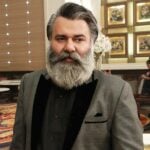
References/Sources: [ + ]

10 Major Achievements of Kalpana Chawla
Born in the small town of Karnal in the Indian state of Haryana on July 1, 1961 , Kalpana (‘imagination’ in Hindi) Chawla was an Indian-American astronaut and aeronautical engineer . She is most famous for being the first woman of Indian origin to fly in space and for her achievements as part of space flights STS-87 and STS-107 . In 1982, Chawla completed her Aeronautical Engineering Degree from Punjab Engineering College in India, and moved to the United States for further studies. Over the next six years she completed her Masters and Ph.D . in Aerospace Engineering . In 1988, Kalpana began her research at the Ames Research Center of NASA (National Aeronautics and Space Administration). In 1991, after becoming a naturalized US citizen, Kalpana Chawla applied for the NASA Astronaut Corps , finally joining the group in 1995 . On her first space flight (STS-87) aboard the Columbia Space Shuttle in 1997 , she became the first Indian-born woman to fly in space, inspiring millions with her remarkable journey. Her second space flight (STS-107) in 2003 however proved to be fatal as the Columbia Space Shuttle disintegrated upon re-entering the atmosphere of the earth . The unfortunate incident claimed her life along with six of her crew members . Kalpana Chawla was posthumously awarded the Congressional Space Medal of Honor and the NASA Distinguished Service Medal . With her grit and determination, she managed to accomplish a lot in her life and contributed towards the development of space research in significant ways. Know more about the journey of Kalpana Chawla through her 10 major achievements.
#1 SHE DID TWO MASTER’S DEGREES AND A PH.D. IN AEROSPACE ENGINEERING
Fascinated by the stars and outer space from a young age, Kalpana Chawla took a keen interest in flying and the science behind it , as she grew up. A high performing student in school, she took up Aeronautical Engineering at Punjab Engineering College in India , being the only girl to opt for the course in her batch. Completing her Bachelor’s degree in 1982 , Kalpana Chawla moved to the United States for further studies. In the US, she obtained a Master of Science (MS) degree in Aeronautical Engineering in 1984 , from the University of Texas in Arlington . Her MS thesis was titled “Optimization of cross-flow fan housing for airplane wing installation” . After completing her first MS degree, she went on to obtain another Master’s degree and a Doctorate (Ph.D.) in Aerospace Engineering from the University of Colorado Boulder in 1988. Her Ph.D. thesis was based on “Computation of dynamics and control of unsteady vertical flows.”
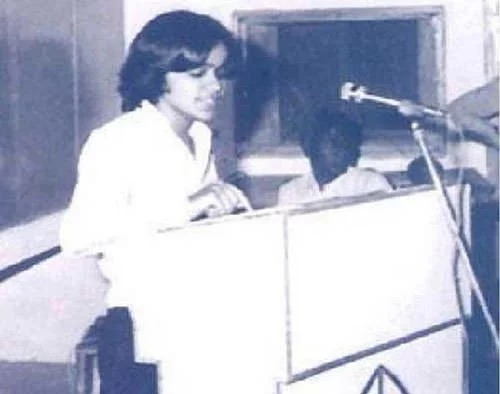
#2 SHE WORKED AT THE NASA AMES RESEARCH CENTER FOR 5 YEARS
Kalpana Chawla began working at the NASA Ames Research Center in 1988 . Her research focused on the concepts of vertical and/or short take-off and landing through computational fluid dynamics , wherein numerical analysis and data structures are used to analyze and solve problems related to fluid mechanics and fluid flows. The concepts that could make an airplane take-off or land on vertical as well as short runways . Chawla worked at the NASA Ames Research Center for about five years , until she joined Overset Methods Inc. as Vice President and Research Scientist in the year 1993 . In her new role she specialized in the simulation of moving multiple body problems . Most of her research on Computational Fluid Dynamics and Vertical and/or short take-off and landing (V/STOL) , has been published and is available in technical journals and various conference papers .
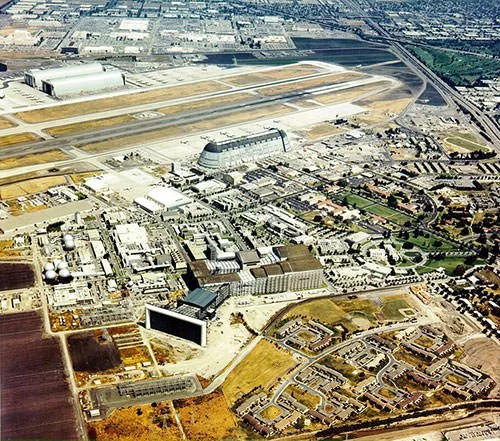
#3 SHE HELD A CERTIFIED FLIGHT INSTRUCTOR RATING AND A COMMERCIAL PILOT LICENSE
Kalpana had always been interested by airplanes and flying. She married her flying instructor and an aviation author Jean-Pierre Harrison in 1983. She was a certified flight instructor herself, rating aircraft and gilders. She also held a commercial pilot license for single and multi-engine airplanes, seaplanes and gliders . Her interest in flying and space propelled her to apply for NASA Astronauts Corps once she became a naturalized United States citizen in April 1991 . She kick-started her space career as an Astronaut joining the team in March 1995 , and was selected for her first space flight mission STS-87 in 1996 .
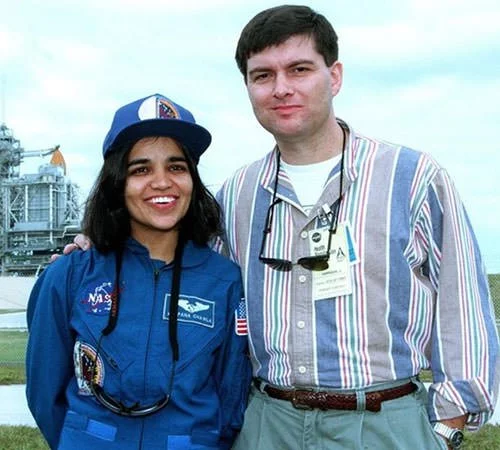
#4 SHE BECAME THE FIRST INDIAN BORN WOMAN TO FLY IN SPACE
Kalpana Chawla’s first space mission began on November 19, 1997 , wherein she was a part of a crew of six astronauts who flew the flight STS-87 aboard the Space Shuttle Columbia . Taking the flight she became the 33rd woman astronaut to fly in space , and created history by being the first Indian born woman to do so . The event served as a tremendous inspiration for a developing country where several scientific institutions were named after her. India would itself go on to have a successful space program in the coming decades. On the mission Kalpana Chawla logged more than 372 hours in space and traveled over 10.4 million miles , with the shuttle making 252 orbits of the Earth in just over a fortnight . The goal of the mission included conducting experiments using the USMP-4 (the United States Microgravity Payload) , conducting two Extravehicular Activity (EVAs) , and deploying the SPARTAN-201 experiment . This was the first mission wherein the EVA, an activity that is done by an astronaut outside the spacecraft in space, was successfully done from Columbia . Chawla was appointed as Mission Specialist 1 , and was responsible for deploying the SPARTAN satellite , which unfortunately malfunctioned. The malfunction was however found to be caused by errors in software interfaces. Chawla was fully exonerated after a NASA investigation .
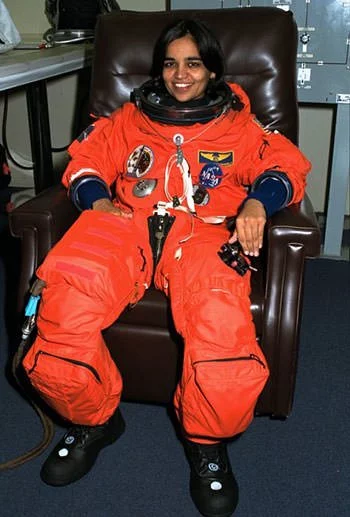
#5 HER SECOND SPACE MISSION PROVIDED IMPORTANT INSIGHTS ABOUT THE EARTH AND SPACE SCIENCE
In 2001, Kalpana Chawla was selected for her second flight as part of the crew of STS-107 . The STS-107 was delayed 18 times due to issues of scheduling and various technical problems. The mission was finally launched on January 16, 2003 , and Chawla began her second space mission on the Space Shuttle Columbia. This mission was the 28th and the final flight of Space Shuttle Columbia. Kalpana Chawla was appointed as Mission Specialist 2 in what would be her second and last spaceflight . She, along with the other six crew members , Commander Rick D. Husband , Pilot William C. McCool , Mission Specialist 1 David M. Brown , Mission Specialist 3 Michael P. Anderson , Mission Specialist 4 Laurel B. Clark and Payload Specialist Ilan Ramon , died on February 1, 2003 , when Space Shuttle Columbia disintegrated over Texas upon re-entering the Earth’s atmosphere. The mission, which began on January 16, 2003 , was in the outer space for 15 days, 22 hours and 20 minutes and during this time, more than 80 scientific experiments were conducted. These experiments gave an insight into the advanced technological developments concerning the earth and space .
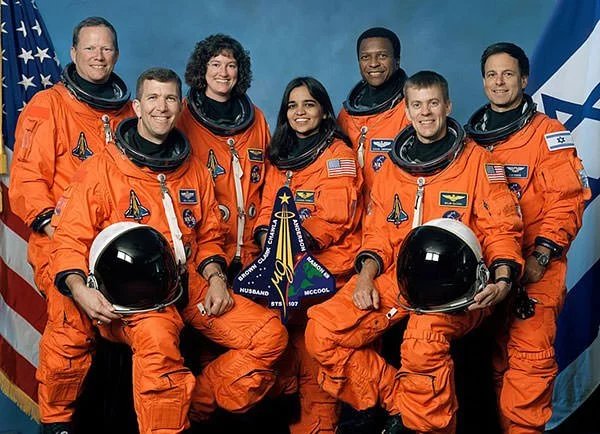
#6 SEVERAL IMPORTANT EXPERIMENTS WERE CONDUCTED DURING STS-107
Some of the major mission highlights for the crew of Space Shuttle Columbia flight STS-107 included the SPACEHAB Double Research Module , the Freestar (Fast Reaction Experiments Enabling Science Technology Applications and Research) Experiment , and the Extended Duration Orbiter pallet . Another very important experiment included a video that was taken to study the properties of atmospheric dust . Through this video, a new type of atmospheric phenomenon may have been detected which was called Transient Ionospheric Glow Emission in Red (TIGER) . Some of the major experiments that were conducted during the STS-107 included 9 commercial payloads with 21 investigations; 1 payload for ISS Risk Mitigation; 4 payloads for European Space Agency; 14 investigations and 18 payloads for NASA’s Office of Biological and Physical Research; and 23 investigations in the SPACEHAB RDM . Among the FREESTAR experiments, the major ones included Mediterranean Israeli Dust Experiment (MEIDEX), Shuttle Ozone Lim Sounding Experiment (SOLSE-2), Critical Viscosity of Xenon-2 (CVX-2), Solar Constant Experiment-3 (SOLCON-3), Space Experiment Module (SEM-14) and Low Power Transceiver (LPT) . Ram Burn Observation (RAMBO) and Shuttle Ionospheric Modification with Pulsed Local Exhaust Experiment (SIMPLEX) were some of the additional payload experiments that were conducted.
#7 SHE WAS AWARDED THE CONGRESSIONAL SPACE MEDAL OF HONOR
Authorized in 1969 and presented by the President of the United States , the Congressional Space Medal of Honor recognizes “any astronaut who in the performance of his or her duties has distinguished himself or herself by exceptionally meritorious efforts and contributions to the welfare of the Nation and mankind” . Kalpana Chawla posthumously received the Congressional Space Medal of Honor in 2004 by US President George W. Bush , for her contribution to the STS-107 , which was the 28th and the final flight of Space Shuttle Columbia. This Congressional Space Medal of Honor is awarded to an astronaut who has performed feats of extraordinary accomplishment while contributing towards the space missions. She was the 17th recipient of the award , which was firstly bestowed upon Neil Armstrong in 1978 for commanding the first lunar landing in Apollo 11 .
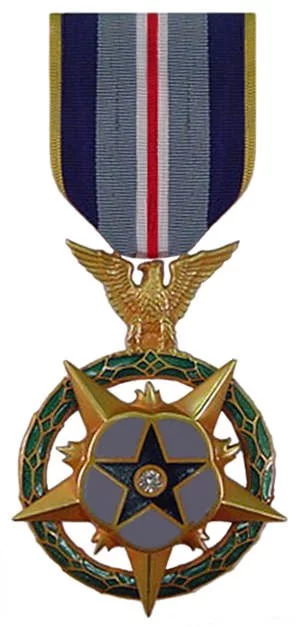
#8 SHE WAS ALSO AWARDED THE NASA DISTINGUISHED SERVICE MEDAL
Kalpana Chawla was posthumously awarded the NASA Distinguished Service Medal in 2004 . The award is bestowed upon those who have displayed “distinguished service, ability, or courage that has made a contribution representing substantial progress to aeronautical or space exploration in the interests of the United States.” The NASA Distinguished Service Medal is the highest award that is bestowed by the agency. Kalpana Chawla received the medal along with fellow crew member William McCool almost a year after their death . Chawla was also posthumously awarded the NASA Space Flight Medal . This award is given to astronauts who have “displayed significant achievement or service during individual participation as a civilian or military astronaut, pilot, mission specialist, payload specialist, or other space flight participant in a space flight mission” . NASA has also named a supercomputer after her.
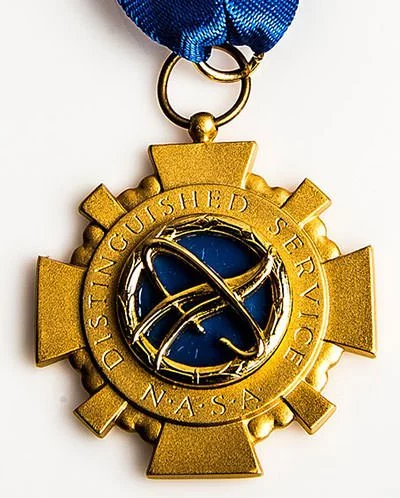
#9 A SERIES OF INDIAN METEOROLOGICAL SATELLITES WERE NAMED AFTER HER
On February 5, 2003 , the then Prime Minister of India, Mr. Atal Bihari Vajpayee , held a condolence meeting for Kalpana Chawla in Delhi and announced that India’s meteorological series of satellites , which were called METSAT would be renamed and now be called as KALPANA to honor her memory. The first satellite of this series was launched by India on September 12, 2002 , with the name METSAT-1 , which was hereafter known as KALPANA-1 . KALPANA-1 was the first exclusive meteorological satellite that was built by India’s space research agency ISRO .
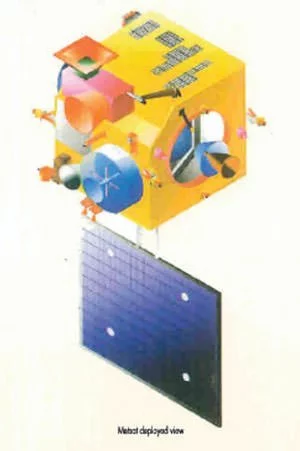
#10 NUMEROUS THINGS HAVE BEEN NAMED AFTER HER INCLUDING AN ASTEROID
In 2001, astronomers of the Near-Earth Asteroid Tracking program at Palomar Observatory in California, United States discovered an asteroid in the outer region of the asteroid belt. The asteroid was named after Kalpana Chawla. 51826 Kalpanachawla is a member of the largest family (Eos) in the outer asteroid belt with close to 10,000 asteroids . The asteroid is about 7 km in diameter . Apart from that, there are many streets, universities, awards and institutions that have been named to commemorate Kalpana Chawla in both in the United States and India. Here are a notable few:-
- The 74th Street in Jackson Heights, Queens, New York City has been renamed to Kalpana Chawla Way.
- The Kalpana Chawla ISU Scholarship fund at the International Space University and the Kalpana Chawla Memorial Scholarship program at the University of Texas at El Paso (UTEP) , which have been created to support women in international space education and provide financial help to meritorious graduate students .
- The Kalpana Chawla Award was instituted by theGovernment of Karnataka, India, in 2004 to recognize young women scientists .
- The Government of Haryana, India established the Kalpana Chawla Planetarium in Jyotisar, Kurukshetra .
- The Kalpana Chawla Outstanding Recent Alumni Award at the University of Colorado, given since 1983, was renamed after Chawla .
Leave a Comment Cancel reply
Privacy overview.
- Raising A Confident Child
The Story of Kalpana Chawla: An Inspiration for Your Child
Does your child want to become an astronaut? Then Kalpana Chawla's story will inspire her. This article narrates the life history of Kalpana Chawla charting out her path to NASA.
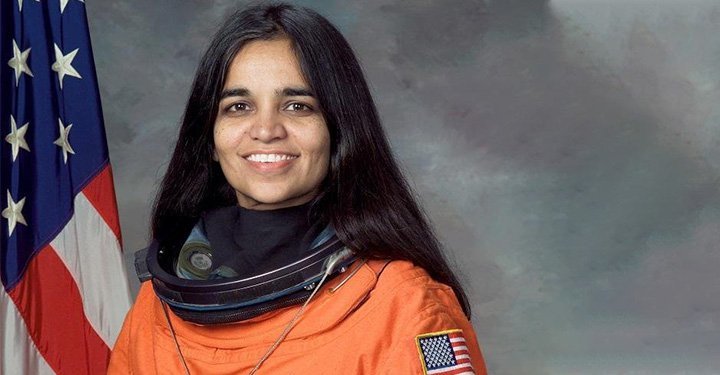
Does your child gaze at twinkling stars and wonder what they are? Do her little fingers yearn to, one day, touch the fluffy clouds? Then, let the story of Kalpana Chawla inspire your child. For, the biography of this Indian-American astronaut who is also the first woman of Indian origin to conquer space, deserves to be written in gold. From being born in a small town in India to reach where no Indian woman has gone before followed by her tragic demise, the story of this first female Indian astronaut is truly worth a biopic.
As a parent, information about her life history, the career-path she followed and her flight to success will help kindle your child's interest in space. Here's an insight into the life of this great astronaut who did India proud.
Kalpana Chawla - The first female Indian astronaut
Kalpana's parents must have had great foresight when they named their child Kalpana, meaning 'imagination'. For, in Kalpana's own words, she was led by, "A strong desire to travel beyond the blue yonder, to fly into the heavens and touch the stars someday ..."
Kalpana Chawla - Early life
Born in the sleepy little town of Karnal, Haryana, Kalpana Chawla was known for her brilliant academic record throughout schooling. She also took part in a whole range of extra-curricular activities - from athletics to dance. While others of her age were playing with dolls, Kalpana loved to sketch and paint airplanes. She made aero-models, and models of the universe and constellations, for science and geography projects in school. Her academic inclinations and interests in aeromodelling laid the foundation for a great journey to outer space that eventually rewrote many records.
Kalpana passed out of Tagore Bal Niketan School, Karnal in 1976. It is believed that at DAV College for Women, where she pursued her pre-university, a 'sets' theory session got her even more motivated to become an astronaut .
Kalpana Chawla - Education
A few years later, Kalpana graduated in Aeronautical Engineering from Punjab Engineering College. It should be noted that she was the only girl in the Aeronautics branch of her college. She was also the secretary of the Aero-Astro club of her college. During her very first year there, she presented a paper on time lapse in space. Shortly after completing her engineering degree, Kalpana was offered a job at HAL, Bangalore, but she turned it down as she was committed to taking her space ambitions further.
In pursuit of her dream, Kalpana applied for Graduate Aeronautical Engineering programmes in three very prominent institutions in the USA. Although she got selected in all three institutions, Kalpana opted for the MS degree in Aerospace Engineering at the University of Texas. This was followed by another MS degree in Mechanical Engineering, and a Doctorate in Philosophy in Aerospace Engineering from the University of Colorado in 1988.
Kalpana began working at NASA's Ames Research Center the same year. Meanwhile, inspired by JRD Tata, she took to flying and obtained her commercial pilot licenses for single and multi-engine airplanes, seaplanes and gliders.
Kalpana Chawla - At NASA
In 1994, the much-awaited dream was about to come true with NASA selecting Kalpana for astronaut training . She had to undergo evaluation for one year - an arduous process which required immense levels of fitness. Kalpana Chawla's determination saw her through this rigorous training programme. In 1996, she was assigned the role of a mission specialist on STS-87 Columbia. In 1997, she finally realised her dream by being a part of a six-astronaut crew aboard the STS-87. Of her first trip to space, Kalpana said that sunrises and sunsets defined her experience in outer space. She yearned for a second chance and that came in 2003, when she was a part of the crew of STS-107, on a 16-day mission dedicated to science and research. On being selected again, she had then said, "Doing it again is like living a dream - a good dream - once again." But, sadly, this time she went off on an eternal voyage to outer space, never to return.
On February 1, 2003, when the shuttle was making its re-entry into the earth's atmosphere, tragedy struck. Sixteen minutes prior to the scheduled landing, the space shuttle disintegrated, thus ending a great space chapter.
Kalpana will be remembered not only for her spectacular feats, but also for her message to children.
"Material interests are not the only guiding light. It is something you'd enjoy doing in the long run. Take the time to figure out how to get there. The quickest way may not necessarily be the best. The journey matters as much as the goal. Listen to the sounds of Nature. Wishing you the best on your trek towards your dreams. Take good care of our fragile planet," she had said.
In fact, Kalpana Chawla was remembered as 'a great friend and mentor' by another American astronaut of Indian origin, Sunita Williams. This famous woman astronaut took off on the space shuttle 'Discovery' to the ISS (International Space Station) on 9 December 2006 and set two records for women in space - being more than 29 hours outside the spacecraft on four spacewalks and spending more than 195 days in space. The latter record was broken by the Italian astronaut Samantha Cristoforetti in 2015. On 15 July 2012, Sunita Williams set off on her second trip to space on Soyuz TMA-05M and spent nearly 127 days in space.
Truly inspirational - the achievements of Kalpana Chawla and Sunita Williams! Let your child too dream big and soar high!
About the author:
Written by Dr Priscilla J S Selvaraj, PhD (Eng & Edu) on 4 August 2017; updated on 6 September 2019
The author is an educationist, language specialist and writer. In a career spanning over two decades, she has taught from preschool to B-School and trained teachers, master trainers and software professionals. She is also a former member of curriculum and syllabus development committees (Govt of Tamil Nadu). Her passion for the written word matches her enthusiasm for entertaining little kids by breaking out into nursery rhymes.
Join our Circles to share, discuss and learn from fellow parents and experts!
Looking for expert tips and interesting articles on parenting? Subscribe now to our magazine. Connect with us on Facebook | Twitter | Instagram | YouTube

Comment Flag
Abusive content
Inappropriate content
Cancel Update
Related Topics See All
More for you.
Explore more articles and videos on parenting
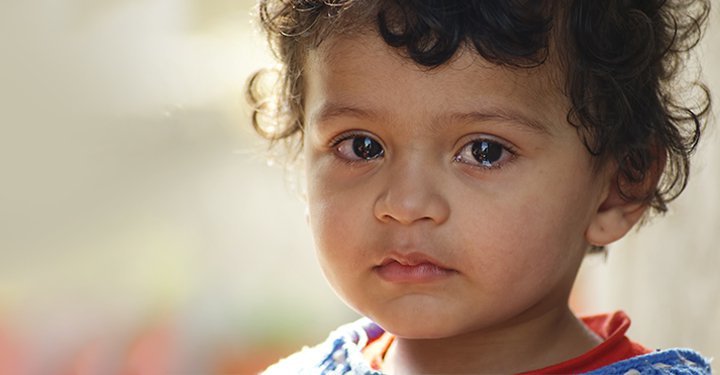
Pre-schooler to Pre-teen • 15 Mins Read • 5.1K Views
Raising Boys In A World Where "Boys Don't Cry". Why All Emotions Are Normal
Boys don't cry. Or do they? They do and they should. Here's how you can help your son learn that all emotions, including fear and sadness, are normal and show him healthy ways to express them

Pre-schooler to 18+ • 9 Mins Read • 10.3K Views
How Self-esteem Affects Your Child's Motivation Levels
Does your child lack the motivation to succeed? A healthy sense of self-esteem plays a crucial role in making your child feel happy and motivated. Read on to find out how.

Teen to 18+ • 13 Mins Read • 2.1K Views
Parenting Teens? Take A Deep Breath And Don't Take It To Heart
Executive coach Wynn Burkett reveals how meditation and self-care can make you a calm and compassionate parent, who's better equipped to navigate those teenage years.
- Communities
Join a community to interact with like-minded parents and share your thoughts on parenting
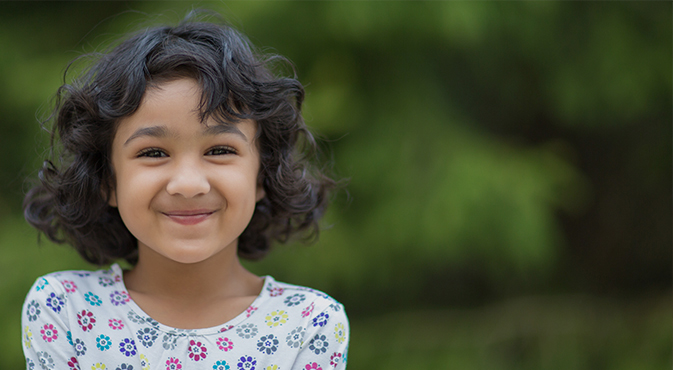
2.5K members • 53 Discussions
Curiosity, tantrums and what not!
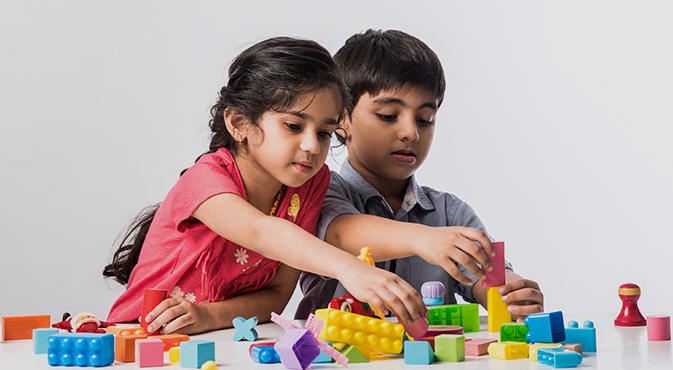
1.9K members • 37 Discussions
The Active and Enthusiastic Middle Years

11-18 Years
1.8K members • 61 Discussions
From Self-consciousness to Self-confidence

Just for Parents
4K members • 152 Discussions
A 'ME' space to just BE!
Discussions Topics
Share your thoughts, parenting tips, activity ideas and more
Hobbies and Entertainment
New member introduction.
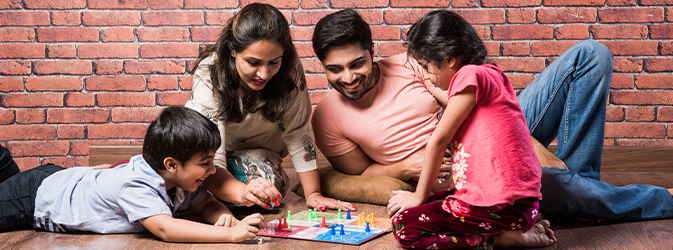
Family Fun Challenges and Activities
- Gadget Free Hour
- Discussions
Share your thoughts, tips, activity ideas and more on parenting
Mothers Day Contest - One Habit I Got From Mom | May 2024
Joy of celebration, best schools in ahmedabad, could someone recommend the top preschool in mumbai's borivali west area, finger-licking recipes from your city share now.
A compilation of the most-read, liked and commented stories on parenting

Why Toxic Parental Conflict Can Harm Kids
10 Mins Read • 3.4K Views
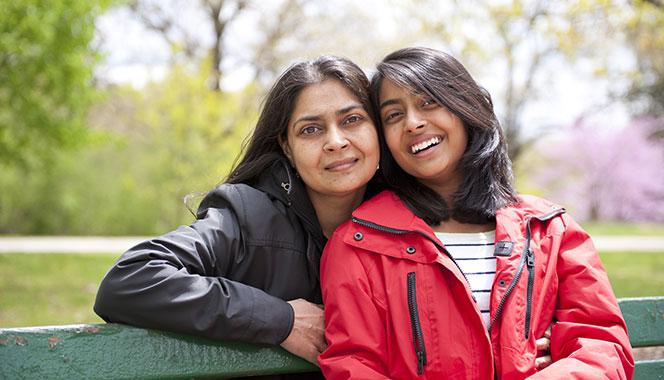
Teenage Love And Relationships: How Parents Can Deal With It
10 Mins Read • 54.3K Views
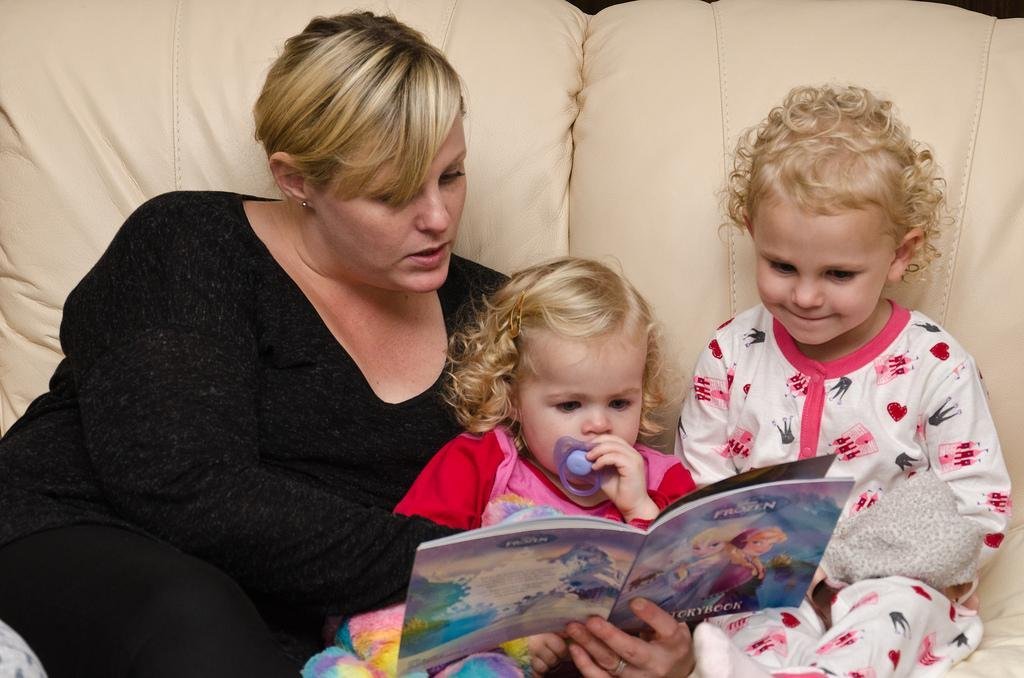
Tips to Read to Your Toddler
7 Mins Read • 5.5K Views
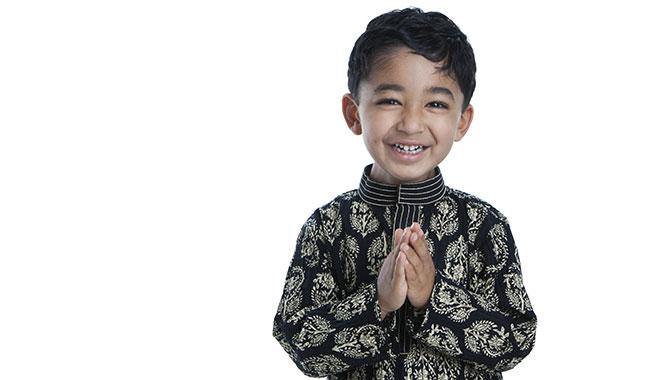
Top 9 Ways To Teach Your Child How To Be Respectful And Humble
8 Mins Read • 10.6K Views
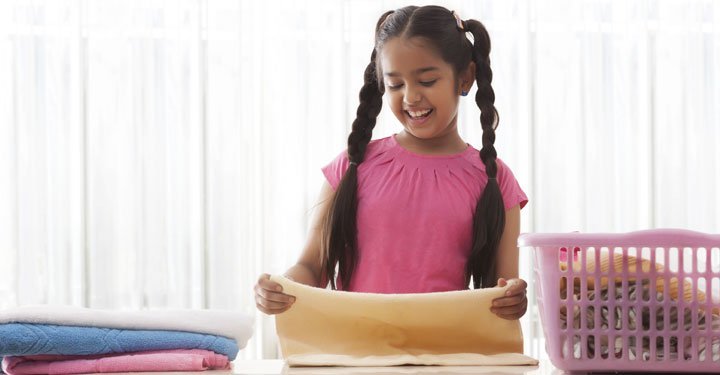
10 Challenges To Teach Responsibility To Your Kid
10 Mins Read • 3.5K Views

Do You Reward Your Child For Good Grades?
7 Mins Read • 2.1K Views
Top Searches
- Notifications
- Saved Stories
- Parents of India
- Ask The Expert
- Community New
- Community Guideline
- Community Help
- The Dot Learning Circle
- Press Releases
- Terms of use
- Sign In Sign UP
We use cookies to allow us to better understand how the site is used. By continuing to use this site, you consent to this policy. Click to learn more
Kalpana Chawla Essay for Students and Children
500+ words essay on kalpana chawla.
Kalpana was the First spacewoman of India. It was the dream that many Indians dreamt of but only Kalpana was able to fulfill it. She had various ambitions in minds from her childhood only. Moreover, she always had an interest in aircraft, and because of that, she took aeronautical engineering .

Furthermore, Kalpana was a woman of great patience and hard work. And she proved that nothing is impossible if you have true dedication for your work. According to her teachers, Kalpna always had a great interest in Science.
Also, she had the ambition to go into space. So from the beginning only she was aiming to become an astronaut . In spite of knowing that it is a really difficult field. Therefore her father always encouraged her to go for higher studies.
Life Story of Kalpana Chawla
Kalpana was born in Karnal which is a small town in Haryana . Furthermore, she went to a local school to complete her primary studies. Kalpana was always a diligent student. Moreover, she was good in her academics. After completing her schooling Kalpana went to college for graduation. She took admission in Punjab University. She took admission in Aeronautical engineering.
Most Noteworthy is that she was the only girl student in the entire batch. This signifies that she always took a different path from others and was a leader. Furthermore, after completing her graduation she went abroad for further studies.

She took admission at Texas University in America. And completed her post-graduation from there. To get a doctorate degree she joined Colorado University. After getting the doctorate degree she began her career in NASA’s Ames Research Centre.
After completing her real career started. In 1994 she became a space passenger in NASA. Further one year later she became a member of space zone too. Kalpana always had a dream of landing on the moon. And as a result of her hard work and dedication, she reached such heights.
Kalpana’s first space mission was on November 19, 1994. She was a part of 6 member crew on space shuttle Columbia Flight STS-87. Furthermore, she lived for around 375 hours and traveled over 6.5 million miles in space. But when she was returning to Earth the space shuttle disintegrated. Thus the lives of all the 7 crew members ended which Kalpana a part was of. Therefore her career ended sooner than expected.
Get the huge list of more than 500 Essay Topics and Ideas
Death of Kalpana Chawla
The Death of Kalpana Chawla struck sadness in the minds of Indians. Yet she will always be a great inspiration for all the Indian women. As she became a role model of all the youth. The youth who have always dreamt of doing something great in their lives. Furthermore, it also gives us a message that we should not confine ourselves within boundaries.
Moreover, we should see life as an opportunity to fulfill our dreams. Kalpana always took life as a challenge and an opportunity. Because of this only she was able to achieve such heights.
Also, it tells us that everything is possible through hard work and dedication. In her graduation days, she was the only woman in her batch. But this did not deviate her from achieving her dreams. At last, her story always inspires us as Indians and makes us proud.
FAQ on Kalpana Chawla
Q1. Who was Kalpana Chawla?
A1. Kalpana Chawla was the first spacewoman of India.
Q2. How did Kalpana Chawla die?
A2. Kalpna Chawla died because her Space shuttle disintegrated. Along with her 6 crew member died as well. This was a great tragedy for the people of America and India.
Customize your course in 30 seconds
Which class are you in.

- Travelling Essay
- Picnic Essay
- Our Country Essay
- My Parents Essay
- Essay on Favourite Personality
- Essay on Memorable Day of My Life
- Essay on Knowledge is Power
- Essay on Gurpurab
- Essay on My Favourite Season
- Essay on Types of Sports
Leave a Reply Cancel reply
Your email address will not be published. Required fields are marked *
Download the App


IMAGES
VIDEO
COMMENTS
Kalpana Chawla (17 March 1962 - 1 February 2003) was an Indian-born American astronaut and aerospace engineer who was the first woman of Indian origin to fly to space. She first flew on Space Shuttle Columbia in 1997 as a mission specialist and primary robotic arm operator aboard STS-87.. Chawla's second flight was on STS-107, the final flight of Columbia, in 2003.
Columbia disaster. Chawla's legacy. Resources. Kalpana Chawla became the first Indian-born woman to go to space in 1997. Six years later, on February 1, 2003, Chawla died when the space shuttle ...
On November 19, 1997, she launched on board Space Shuttle Columbia as part of STS-87. Chawla specialized in operating the robotic arm, which she used to deploy the Spartan Satellite. During the 16-day mission, the crew conducted numerous experiments, with a focus on materials science. Chawla made history as the first Indian woman, and the first ...
In 1983, Kalpana Chawla married Jean-Pierre Harrison, a French-American flying instructor and a author, knowns for his two books: 'The Edge of Time: The Authoritative Biography of Kalpana Chawla' and 'Principles of Helicopter Flight'. The couple did not have any children. In 1991, she became an American citizen.
Biography of Kalpana Chawla in Short. India's Karnal is the place of birth of Kalpana Chawla (March 17, 1962 - February 1, 2003). She was the first Indian woman in space and the first Indian-American astronaut. As a mission specialist and primary robotic arm operator, she made her first space flight on the Space Shuttle Columbia in 1997.
Kalpana Chawla. Kalpana Chawla (March 17, 1962/1961 - February 1, 2003) was an American astronaut of Indian origin. She was the first Indian-American astronaut and the first Indian woman to go into space . She got married to flight instructor Jean-Pierre Harrison. [2] She first flew in 1997 on the STS-87.
Dr. Kalpana Chawla was the first Indian woman in space. Born in India, she immigrated to the United States after earning her degree in aeronautical engineering. In the 1980s, she became a naturalized citizen and obtained her master's and doctoral degrees in aerospace engineering. In 1994, NASA selected her as an astronaut candidate. Her first ...
SHOW ALL QUESTIONS. Kalpana Chawla (17 March 1962 - 1 February 2003) was an Indian-born American astronaut and aerospace engineer who was the first woman of Indian origin to fly to space. She first flew on Space Shuttle Columbia in 1997 as a mission specialist and primary robotic arm operator aboard STS-87.
Chawla, Kalpana (1962-2003). Kalpana Chawla, the first Indian American woman astronaut, was born on March 17, 1962, in Karnal, India, to Syongita (Devi) and Banarsi Lal Chawla, the owner of a tire manufacturing plant. As a child she dreamed of becoming an astronaut after being inspired by Jehangir R. D. "JRD" Tata, the pilot of the first ...
KALPANA CHAWLA (PH.D.) NASA ASTRONAUT (DECEASED) PERSONAL DATA: Born in Karnal, India. Died on February 1, 2003 over the southern United States when Space Shuttle and her crew perished during entry, 16 Columbia minutes prior to scheduled landing. She is survived by her husband. Kalpana Chawla enjoyed flying, hiking, backpacking, and reading.
Kalpana Chawla was an Indian-American astronaut and engineer. She is also the first woman of Indian origin to go to space. She first flew to space in 1997 on Space Shuttle Columbia, where played the role of mission specialist and primary robotic arm operator. Her second and final flight on Space Shuttle Columbia was in 2003 where she perished ...
Kalpana Chawla Biography: Kalpana Chawla was the first Indian- born woman to go into space in 1997. She lost her life on 1 February 2003, when the space shuttle Columbia was destroyed. Let us take ...
Kalpana Chawla was born on the 1st of July, 1961 in a small town in Karnal located in the state of Haryana. Her parents, Banarasi Lal Chawla and Sanjyothi had two other daughters named Sunita and Deepa and a son named Sanjay. Kalpana was the youngest in her family and hence, she was the most pampered too. She got educated at the Tagore Public ...
Kalpana Chawla was born in Karnal, India, on March 17, 1962. The first woman in India to visit space was Kalapana. She joined NASA's Space Shuttle program in 1994, where she worked as a specialist in missions on STS-26 (1993), STS-49 (1995), and STS-61C (1996). She also participated in a spacewalk during this mission.
O n February 1, 2003, seven NASA astronauts perished over Texas as Space Shuttle Columbia STS-107 disintegrated while re-entering the Earth's atmosphere. One of those killed in the disaster was Kalpana Chawla, the first Indian-origin woman in space. A role model for countless Indian women, Kalpana was an ordinary girl from Karnal whose lofty dreams and indomitable courage took her to space.
500+ Words Essay on Kalpana Chawla. Kalpana Chawla was the first woman of Indian origin to go to space. She is an inspiration to millions of women who want to build their careers in aerospace. Kalpana Chawla said that she never dreamed, as a child, that she would cross the frontiers of space. It was enough that her parents allowed her to attend ...
A very short biography of Kalpana Chawla, the only India-born female astronaut. She was born and raised in India of the 60s. She overcame the obstacles posed by the conservative family and society of that time. And to think of it, it was the time without the internet. Finding information, seeking opportunities and planning career wasn't as easy ...
Father- Banarasi Lal Chawla (deceased) Mother- Sanjyothi Chawla Brother- Sanjay Sister- Sunita, Dipa, and 1 other Note: Kalpana Chawla's father died on 3 October 2023; his body was later donated to the Kalpana Chawla Government Medical College in Karnal, Haryana, as per his last wish. [1] The Indian Express: Religion: Hinduism: Hobbies
Kalpana Chawla is an inspiration to millions of people worldwide, and her biography is a must read for anyone looking for motivation and inspiration. The book provides a complete and in-depth look at her life, from her childhood in India to her years of training at NASA and her ultimate journey into space.
Born in the small town of Karnal in the Indian state of Haryana on July 1, 1961, Kalpana ('imagination' in Hindi) Chawla was an Indian-American astronaut and aeronautical engineer.She is most famous for being the first woman of Indian origin to fly in space and for her achievements as part of space flights STS-87 and STS-107.In 1982, Chawla completed her Aeronautical Engineering Degree ...
Kalpana Chawla is an Indian-American astronaut who is also the first Indian woman in space. Know about Kalpana Chawla's biography such as her early life, education, and life history of Kalpana Chawla charting out her path to NASA. The story of this wonderful woman who is an inspiration to all girls interested in a space career.
500+ Words Essay on Kalpana Chawla. Kalpana was the First spacewoman of India. It was the dream that many Indians dreamt of but only Kalpana was able to fulfill it. She had various ambitions in minds from her childhood only. Moreover, she always had an interest in aircraft, and because of that, she took aeronautical engineering.